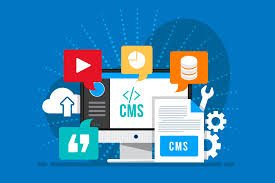Executive Overview
The accelerating demand for omnichannel content delivery has exposed the limitations of traditional, monolithic content management systems. Enterprises now seek more agile, modular architectures to support evolving digital experiences. Enter Headless CMS—a decoupled framework that separates content creation from presentation, empowering development teams to innovate freely while maintaining centralized content governance.
This insight explores leading Headless CMS platforms and how they can drive strategic value across digital initiatives.
The Strategic Case for Headless CMS
In contrast to conventional CMS architectures that entangle the backend and frontend, a Headless CMS serves content via APIs, enabling distribution across websites, mobile apps, IoT interfaces, and digital signage—all from a single content repository.
Enterprise Benefits:
- Omnichannel Reach – Deliver consistent experiences across devices and platforms.
- Developer Agility – Empower front-end teams to build in React, Vue, Flutter, or native frameworks.
- Scalable Architecture – Support traffic spikes and future-proof the tech stack.
- Faster Time-to-Market – Reduce deployment cycles through API-driven content delivery.
- Enhanced Security – Minimized attack surface by decoupling presentation layers.
Platform Spotlights: Notable Headless CMS Solutions
OneEntry: Backend-as-a-Service (BaaS) with Enterprise Simplicity
OneEntry offers a powerful BaaS ecosystem, ideal for development teams seeking integrated backend and content services.
Key Capabilities:
- Ready-to-Deploy Backend – No need for server configuration or database provisioning.
- Flexible SDK & API Support – Compatible with JavaScript, Swift, Kotlin, and other modern stacks.
- Multilingual Admin Interface – Designed for both technical and non-technical contributors.
- Built-In Security and Business Logic – Accelerates deployment while ensuring compliance.
- Cloud-Native & Cost-Effective – Scales with business needs and includes regular updates.
Use Cases: E-commerce storefronts, cross-platform apps, and dynamic content portals.
Mailchimp’s Viewpoint: Strategic Value of Headless Architectures
While Mailchimp is recognized for email marketing automation, its position on headless CMS reflects broader enterprise trends. The company underscores:
- Flexibility for Brand Consistency – Headless systems enable consistent voice across touchpoints.
- Customized UX – Freedom to design tailored experiences based on customer journey insights.
- High Scalability – Decoupled delivery accommodates growth in traffic and personalization demand.
Mailchimp’s endorsement reinforces headless CMS as a foundational layer for modern martech ecosystems.
Jamstack’s Curated Ecosystem: Tools for Every Developer Profile
The Jamstack community offers a diverse portfolio of Headless CMS platforms catering to different strategic and technical needs:
- Strapi – Open-source, JavaScript-native CMS with extensibility and active community support.
- Ghost – Lightweight and content-focused, suited for digital publishers.
- Payload CMS – Prioritizes developer experience with flexible schema control and modular APIs.
- Directus – Offers real-time APIs for structured content directly from SQL databases.
- Sanity – Provides live collaboration, customizable schemas, and a fully decoupled content studio.
Each platform supports integration with static site generators and headless front-end frameworks, facilitating high-performance, composable websites.
Strategic Considerations for Enterprise Adoption
When evaluating a headless CMS, enterprise leaders should assess the following:
- API Maturity: RESTful vs GraphQL flexibility for future integrations.
- Content Modeling Flexibility: Custom schemas to mirror organizational complexity.
- Scalability and Cloud Infrastructure: Native support for edge delivery and CDN integration.
- Editor Experience: Balance between developer freedom and marketer usability.
- Security & Compliance: Data protection, roles, and audit capabilities at scale.
Conclusion: Building a Future-Proof Content Stack
As content becomes a strategic differentiator, enterprises must move beyond legacy CMS platforms and embrace composable, API-first architectures. Headless CMS enables a modular, agile, and scalable approach to managing digital content—laying the foundation for innovation, consistency, and rapid deployment across customer channels.
For organizations prioritizing digital velocity, omnichannel engagement, and platform resilience, Headless CMS is not just a technical upgrade—it is a strategic mandate.

